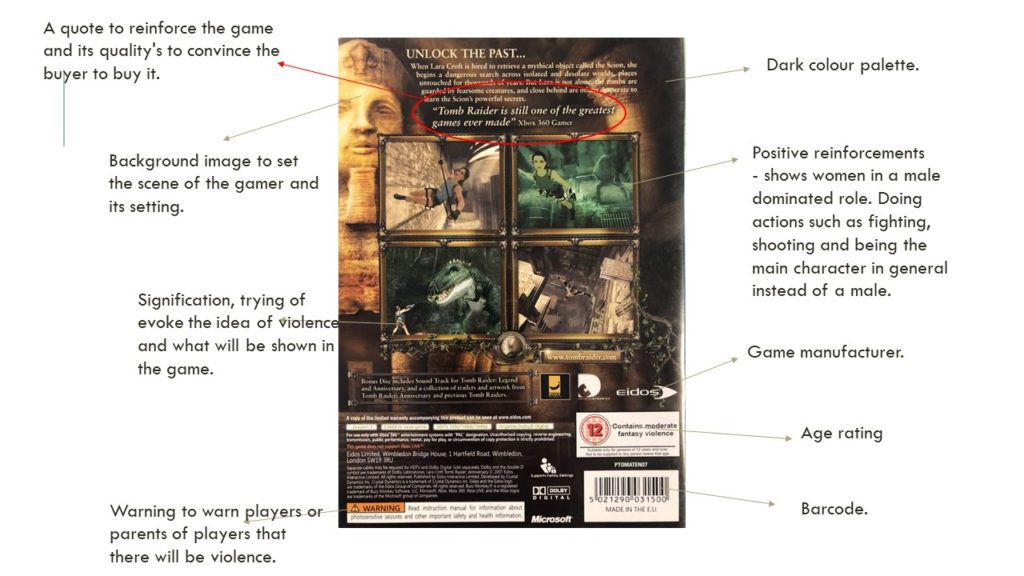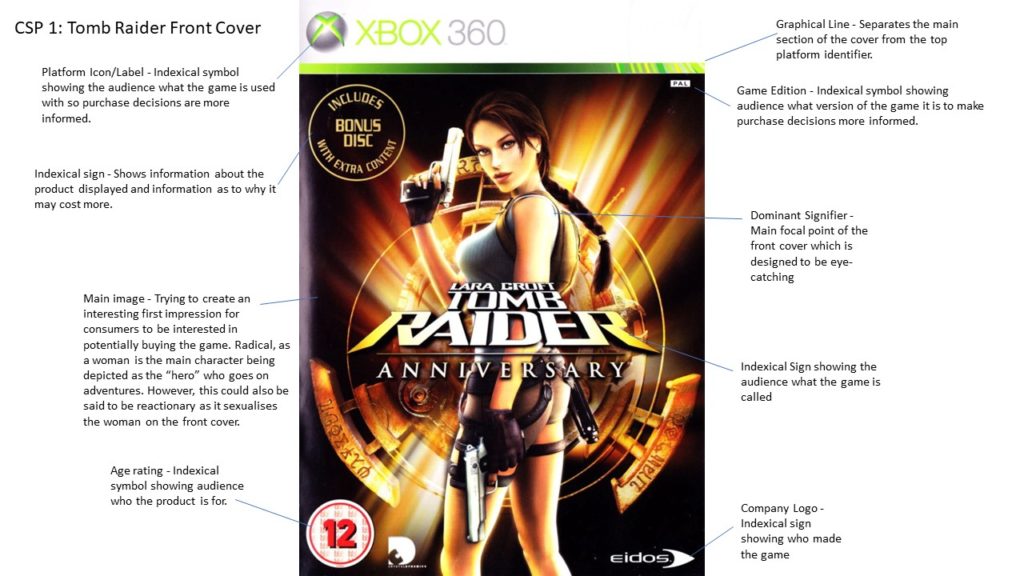










The way Lara Croft is presented in the CSP 1 front cover of tomb raider as both radical and reactionary. The use of Lara Croft is radical because woman aren’t stereotypically put in action-filled situations. On the other hand the use of Lara Croft on the front cover is to sexualise her. She is posed with her back to the camera with tight fitting clothing which is common in games. This is reactionary because it is expected.









History of Media Induction task

Semiotics
Ferdinand de Saussure
C S Pierce
Roland Barthes
| Characteristics | Example | ||
| Newspaper | – In black and white print – Published for a general audience – Information on current events and local and regional news | The Daily Express | |
| Television | – Visual – Appeals to a wide target audience – Live news can be broadcasted | Good Morning Britain | |
| Film | – Usually intended for entertainment and/or educational purposes – Continuous showing, no advertisements – Can be expensive and very time consuming to create | David Attenborough: A Life on Our Planet | |
| Radio | – Audio – Music, news and advertisements can be played – The radio station played depends on the area one lives in | Channel 103 | |
| Video games | – Played on a video game console – Expensive to rent/buy – Large variety of games appealing to different consumers | Sims | |
| Music video | – Audio and visual – Illustrates a story of the song – Typically very creative | Chandelier by Sia | |
| Marketing/advertising | – Made to sound or look very appealing to the audience – Can be very expensive to market/advertise depending on who is advertising a product or service, how often and where – Marketing/advertising can be deceptive so people are more interested in purchasing the product/service | Garnier advertisement | |
| Social media | – Free to use – Very large audience – Easy to use and more modern than other media forms | ||
| Magazines | – Very engaging they can have quizzes, games, competitions – Usually are issued monthly, a subscription can be purchased – There are many different genres such as fashion, women’s health, home decor magazines | Elle |